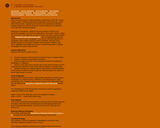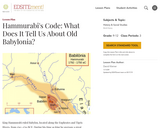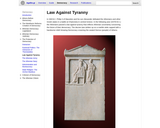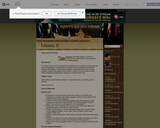
This parent guide supports parents in helping their child at home with the 6th grade Social Studies content.
- Subject:
- Social Studies
- Material Type:
- Reference Material
- Vocabulary
- Author:
- Kelly Rawlston
- Letoria Lewis
- Date Added:
- 10/12/2022

This parent guide supports parents in helping their child at home with the 6th grade Social Studies content.

This resource accompanies our Rethink 6th Grade Social Studies course. It includes ideas for use, ways to support exceptional children, ways to extend learning, digital resources and tools, tips for supporting English Language Learners and students with visual and hearing impairments. There are also ideas for offline learning.

Containing more than 50 articles from the award-winning Tar Heel Junior Historian magazine and over 40 lesson plans, this multidisciplinary Educator Notebook will enrich your exploration of North Carolina and American history with diverse perspectives. This resource's link takes you to a very short form that gives you free downloadable access to the complete PDF book.

In this chapter you will learn about religion. What is religion? Simply put, religion is the belief in a god or set of gods. Unfortunately, the study of religion is not simply put. Religion is very complex; it is one of the most interesting parts of human existence. Religion is a belief in a god or set of gods and so much more. It is part of a cultural system that includes practice, world views, ethics, and a social organization that connects humans to each other and to a source of existence. A religious belief system is also a way of explaining the mysteries of life.

This resource provides links and other resources to helps students analyze the geographic, political, economic, social, and religious structures of the civiliazations.

Working in small groups, students will work produce sections of an historical newspaper or journal for publication in democratic Athens. Using the resources of this Web site (as well as books and other resources listed in the Research Links & Resources Page) pick an approximate date and research stories for your newspaper. This section has been tailored for a newspaper about Athens during the time of Pericles, because of the greater amount of information available for that period. However, with some adaptation and additional research it would be possible to compile newspapers for early or later periods.

Students learn about life in Babylonia through the lens of Hammurabi's Code. This lesson is designed to extend world history curricula on Mesopotamia and to give students a more in-depth view of life in Babylonia during the time of Hammurabi.

In this lesson, students are introduced to the major langugae and religious groups of Europe. They explore how those groups align with and/or cross country borders.

Students will read a passage, write answers to questions based on the passage, and write to explain and justify their position. This resource supports English language development for English language learners.

This resource informs students of a law against tyranny passed by Athenians.

In this activity, students read about mercantilism and read the tale, The Golden Touch, to hypothesize why mercantilist ideas about gold were given up.

This course was created by the Rethink Education Content Development Team. This course is aligned to the NC Standards for 6th Grade Social Studies.

This course was created by the Rethink Education Content Development Team. This course is aligned to the NC Standards for 6th Grade Social Studies.

In this lesson, students will analyze the Grimm fairy tale, Rumpelstiltskin, and determine if a breach of contract occurred. Students will be able to clearly define justice, contract, and responsibility. Students will be able to identify specific abuses of power and authority. Students will evaluate behaviors of individuals’ authority, power and responsibility.

In this unit, students will study what common interests and goals lead to the rise of great civilzations, the political leadership and government influence on ancient cultures, and what common factors broght about the decline of notable civilizations.

During this unit students will examine civilizations from around the globe to examine similarities and differences from various cultures. A key component of this unit will be to identify areas of innovation to understand how they led to the advancement of the society as a whole.

This unit will view different cultures from around the world in an attempt to see how they developed and to find similarities and differences in the way they developed and the way they lived.

In this activity, students will determine the similarities between three early river valley civilizations - Mesopotamia, India, and China - focusing on government/laws, religion, and social structure. Students will write an essay using examples from all three civilizations.

This lesson focuses on the concept of the afterlife and the importance of pleasing the gods and goddesses, the significance of tombs and tomb building, and the burial customs and traditions of the ancient Egyptians. After learning about all of these concepts, students will design a tomb, create a model of it, and complete a short written assignment explaining the design and contents of the tomb.

Students read and understand several years of data presented in bar graphs and line graphs. Students will also identify voting trends by race, year, and region.